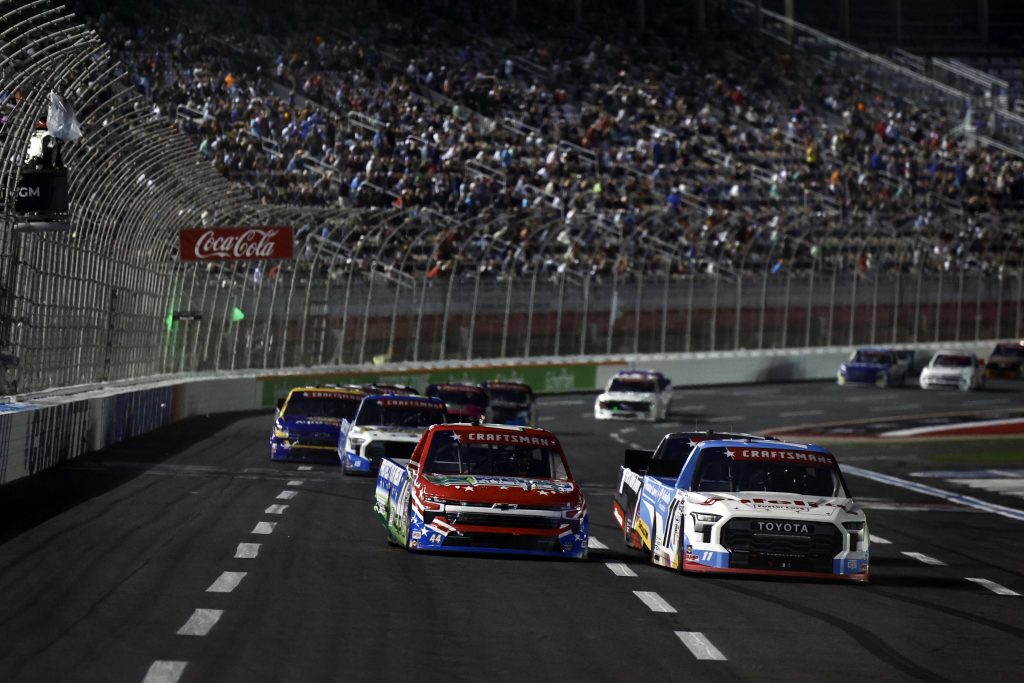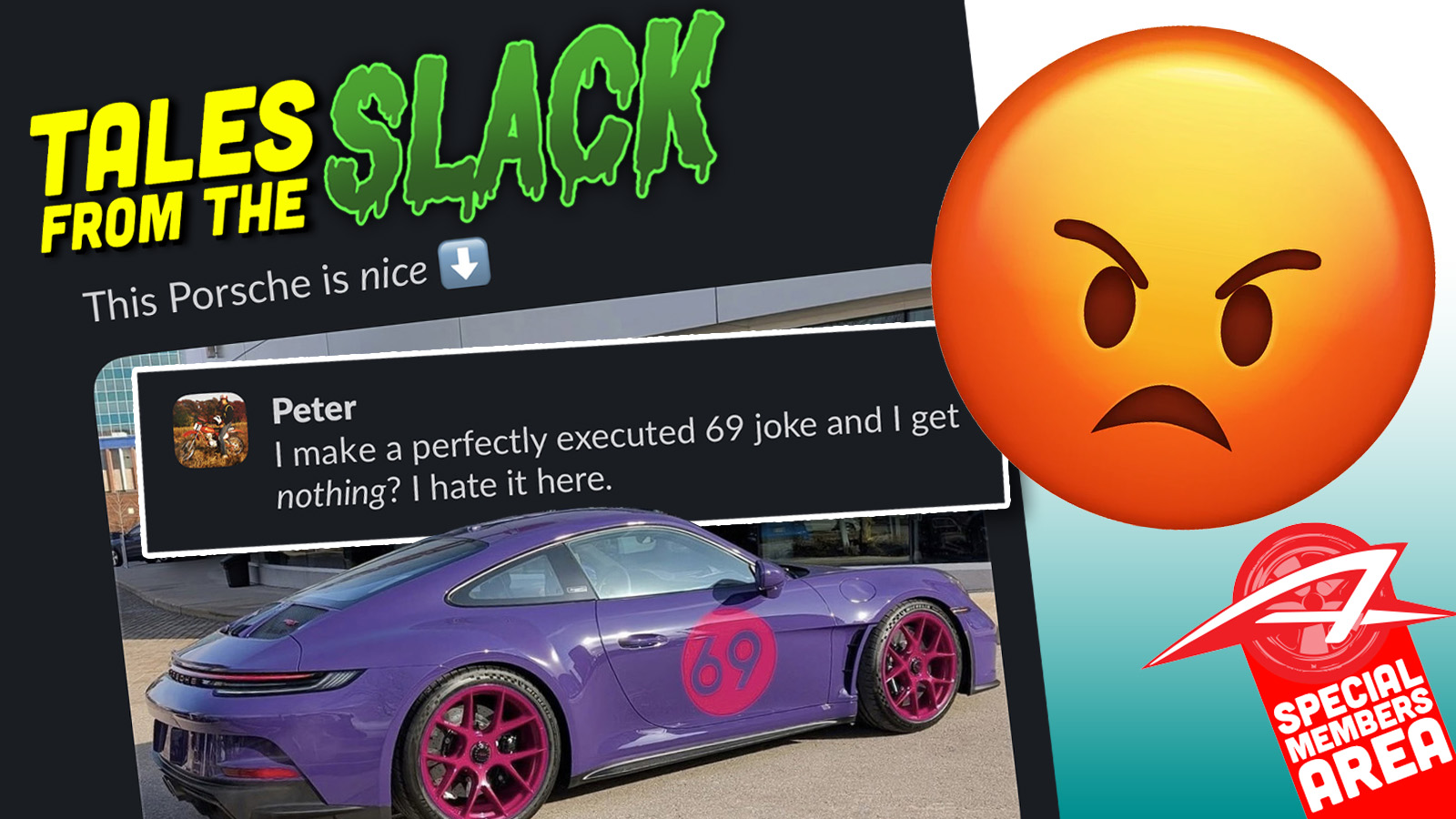I’d kill to live next to a race track. Waking up to the blaring roars of V8s in the morning sounds like my idea of the perfect alarm clock. While most people reading this probably feel similarly, there are far more people who don’t. I can understand why. Hearing loud noises when you’re just trying to relax in your backyard probably isn’t the most enjoyable thing.
With hundreds of oval tracks, drag strips, and road courses throughout the United States, people who live close by are bound to complain. And they certainly do. The most recent notable squabble between a race track and its nearby residents lies with the historic Weathertech Raceway Laguna Seca. The Northern Californian track, which has been around since 1957 and runs most of the year with a 90-decibel sound limit, was sued by a group of nearby residents in 2022 for being a “public nuisance” that “has caused and will continue to cause irreparable injury not subject to money damages.” The case was settled out of court last year, according to HistoricMotorRacingNews.com.
Then there was the drama a few years back at Lime Rock Park in Connecticut. Since 1959, the track has been banned from running races on Sundays via an injunction spurred by annoyed homeowners within earshot of the track. But in 2015, Lime Rock attempted to amend that injunction by adding two Sunday dates to host professional-level events. In 2020, the courts ruled against Lime Rock, and Sunday events remained off the table.

Source: Brian Silvestro
And don’t forget that whole Freedom Factory ordeal. Lawrence Garrett Mitchell, known online as Cleetus McFarland, famously purchased an unused oval track in Florida back in 2020 to use for his YouTube antics. In 2022, he caught wind of developers pushing to rezone an area next to the track for housing construction. While the nearby houses themselves wouldn’t immediately spell the end for the Freedom Factory, Mitchell rightly worried the residents who moved in would surely voice their concerns about the noise.
Mitchell attempted to stop the rezoning from happening, gathering fans to show up at a town vote. Despite his pleas, commissioners voted 5-2 to rezone the land for housing. Mitchell’s last update on the matter was published in 2024, where he showed housing development beginning on the land:
My point is, race tracks have it tough when it comes to dealing with neighbors. I can’t help but feel bad for these facilities since, most of the time, it was the tracks that got there first. But as Road & Track points out in its coverage of the Laguna situation, nuisance case law usually wins out.
North Carolina’s Solution
North Carolina just passed a law that makes life a lot easier for people who run race tracks. Buried in Article 10 of House Bill 926 is a section titled “Protect The Right To Race.” In what seems like very clear terms, it prevents nearby property owners from bringing cases against racing facilities over “nuisances” (a.k.a. loud noises). From the bill:
A racing facility shall not be subject to any action brought by a surrounding property owner under any nuisance or taking cause of action if the developer of the racing facility obtained all permits required for construction of the racing facility and established a vested right in the development of the property or contiguous group of properties where the racing facility is located before the surrounding property owner either purchased the real property or constructed any building in the area of the racing facility.
In other words, if the race track was there first, you can’t complain about the noise, since you moved in after it was there. Seems like a common-sense approach to me.

Source: DepositPhotos.com
The law will only defend race tracks against properties located within a three-mile radius of the track’s facilities. So if your top-fuel dragsters are annoying homeowners five miles away, they still have a right to legally voice their concerns.
North Carolina is a fitting state for such a law. You could argue it’s the racing capital of the country, personnel-wise. From The Drive:
It makes sense that North Carolina would be pro-racing. NASCAR has a huge presence there, both with major corporate offices and R&D shops. The state is home to plenty of tracks, too. In addition to big-league motorsports venues like Charlotte Motor Speedway, North Carolina has about 40 active tracks that host public events (per a 2021 state budget document) and 28 short track venues that run racing “on a near weekly basis,” according to the North Carolina Motorsports Association.
The National Speedway Directory shows how the state’s tracks are geographically distributed—kind of all over the place. SEMA says North Carolina’s economic output in relation to motorsports is $3.82 billion annually, creating “nearly 20,000 jobs, paying over $1.35 billion in wages, and contributing more than $477 million in taxes.”
North Carolina isn’t the first state to pass a law like this. Iowa passed a very similar law back in May, with much of the same stipulations.
A racing facility or racetrack shall not be subject to any action brought by a surrounding property owner under nuisance, taking, or other theory if the racing facility or racetrack was built before the surrounding real property owner either purchased the real property or built in the area of the racing facility or racetrack.
The only difference here is, the Iowa law doesn’t define a distance limit, which means even more legal leeway for race tracks.
Maybe if our government can get the government funded, it could throw a line like Iowa’s into the bill. No one would notice, right?
Top photo: DepositPhotos.com
Support our mission of championing car culture by becoming an Official Autopian Member.









Bandimere Speedway (Denver) was way away from anywhere in 1958 when it was built. Residential areas encroached on it over the years, and noise complaints eventually drove it to close down a couple years ago. They’re going to re-open way out on the plains, well away from any urban areas, but that’ll take a while. The problem is that the old Bandimere was in a very unique location for a dragstrip, with a long steep uphill stretch to slow down the cars after their runs…impossible to replicate out on the plains.
But yeah, this’d be a classic “if you build next to the racetrack, don’t complain about the noise” situation…but they complained anyways.
“nuisance case law usually wins out.”
Anyone who complains is the fucking nuisance. The tracks were there 1st…so I’m glad these tracks are being protected. If you didn’t want to live next to the track, you shouldn’t have fucking moved there
I’m pretty big on the concept of deferring to the incumbent residents/businesses. If you move where there is something noisy, like a race track, airport or whatever, that’s a you problem.
I’m still upset that when they built Denver International Airport, it was intentionally way out of town where nobody lived because they didn’t want to worry much about noise. Then all these houses cropped up and for some reason they didn’t tell the folks moving in to just pound sand.
I used to live under the landing approach to Dulles, and had some neighbours move in and attempt to file noise complaints to shut the airport down. I really wish I could’ve been there to see them laughed out of the room.
A lot of homeowners are idiots.
If you buy a house next to a race track, school, etc, you’re gonna hear the related noise.
I personally live next door to an elementary school. I moved there because my kids attended that school. And even though they don’t anymore, the sound of children playing actually makes me feel happy.
And if I bought a house near or next to a race track, it would be because I’d be interested in attending the events at the track.
This sounds like a good law to me and puts limits on those NIMBY idiots.